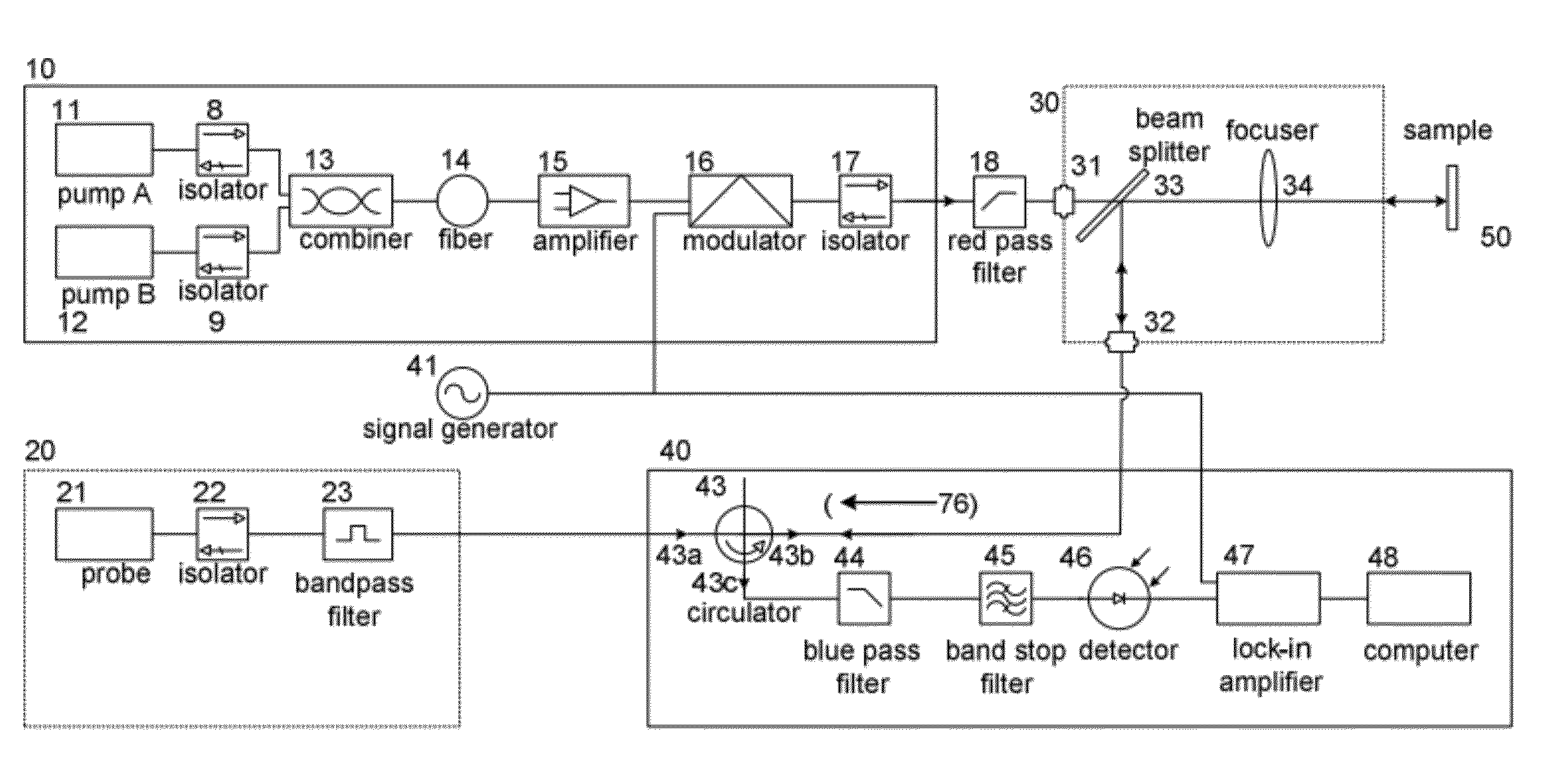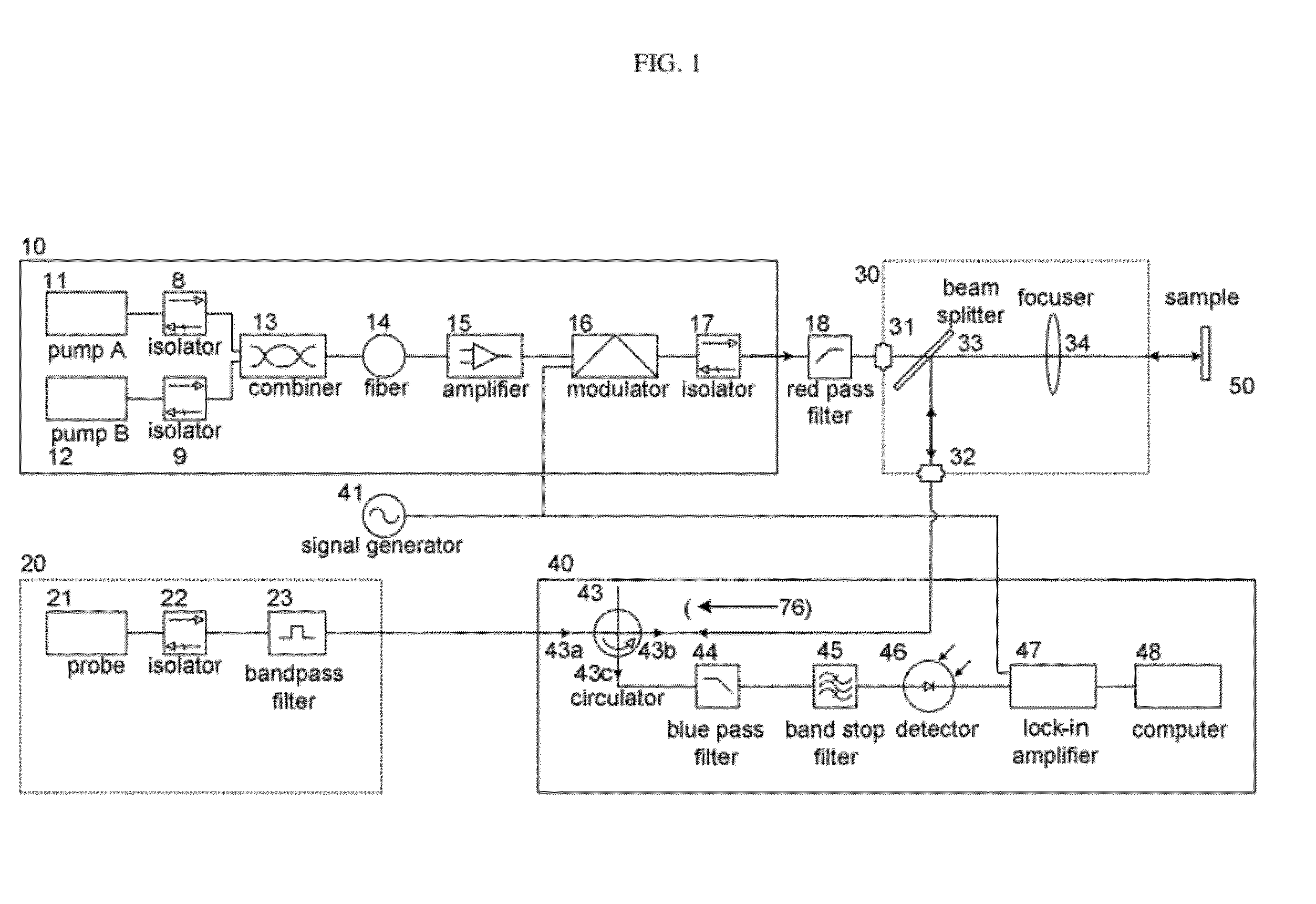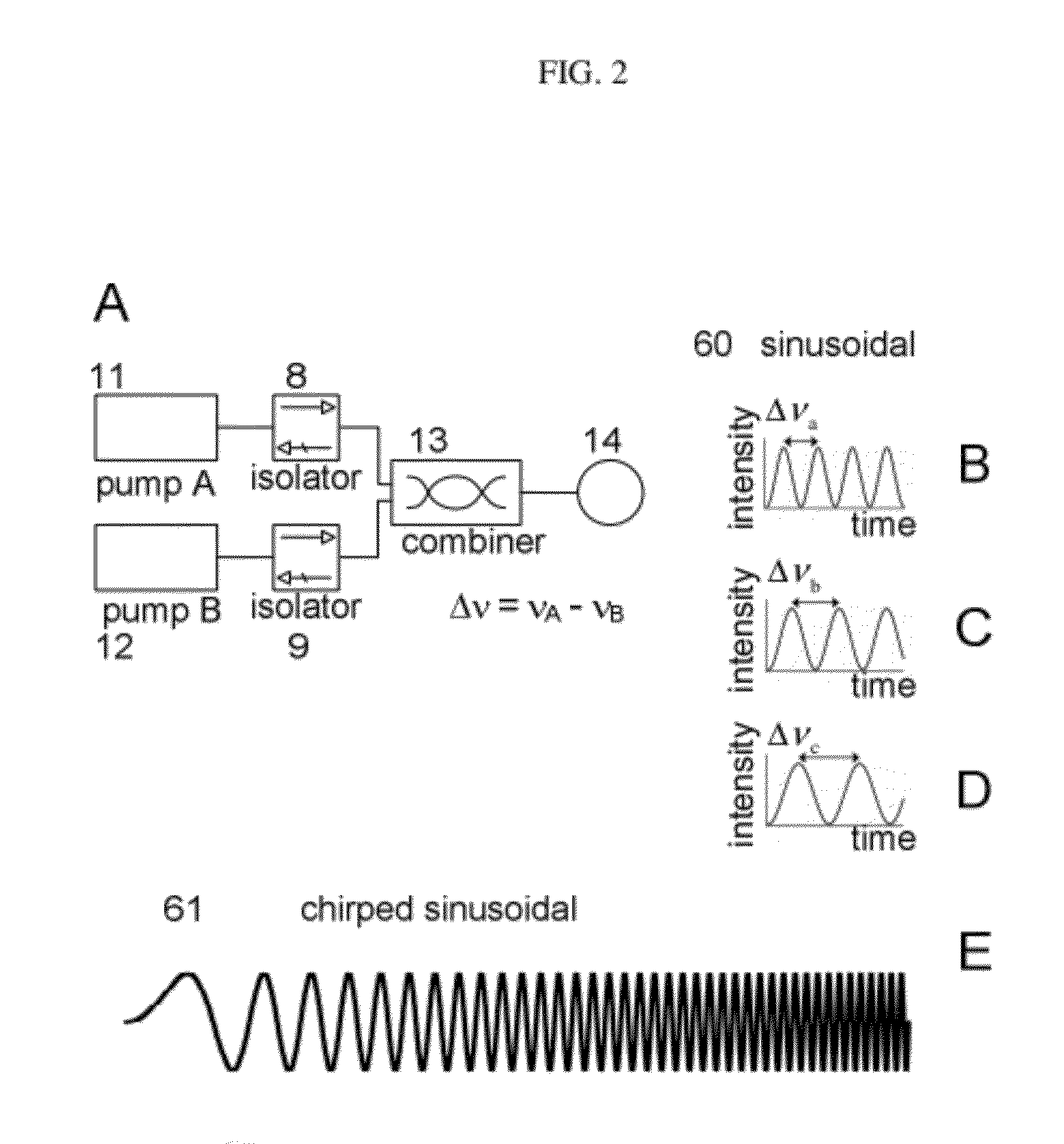Generating and Detecting Acoustic Resonance in Thin Films
a thin film and acoustic resonance technology, applied in the direction of vibration measurement in solids, manufacturing tools, instruments, etc., can solve the problems of periodic expansion of thin films, deviation from actual thermal properties or given thicknesses, and periodic heating, etc., to achieve the effect of multiple measurement sites without undue cost or equipment siz
- Summary
- Abstract
- Description
- Claims
- Application Information
AI Technical Summary
Benefits of technology
Problems solved by technology
Method used
Image
Examples
Embodiment Construction
[0022]FIG. 1 is a schematic diagram of one embodiment of the apparatus of this invention. The major subsystems include the pump beam system 10, the probe system 20, the focusing optic 30, and the detection system 40. The components enclosed in 10 define the system for the pump beam, which comprises a means for generating an acoustic wave, optionally resonant, in a sample 50 comprising first and second pump beams heterodyned, optionally, in a first optical fiber 14, to produce a periodic waveform with a frequency component between about 10 MHz to about 10 THz. A means for generating an acoustic wave, optionally resonant, comprises 11 and 12, two lasers; in one embodiment the lasers are DFB, distributive fiber grating, cw, continuous wave, lasers of about constant intensity and of different wavelengths; the wavelengths are in a range of about 10 nanometers to about 100 microns. Optionally, a laser wavelength is tuned by a temperature controller and the output light coupled into an opt...
PUM
| Property | Measurement | Unit |
|---|---|---|
| thicknesses | aaaaa | aaaaa |
| wavelengths | aaaaa | aaaaa |
| area | aaaaa | aaaaa |
Abstract
Description
Claims
Application Information
 Login to view more
Login to view more - R&D Engineer
- R&D Manager
- IP Professional
- Industry Leading Data Capabilities
- Powerful AI technology
- Patent DNA Extraction
Browse by: Latest US Patents, China's latest patents, Technical Efficacy Thesaurus, Application Domain, Technology Topic.
© 2024 PatSnap. All rights reserved.Legal|Privacy policy|Modern Slavery Act Transparency Statement|Sitemap



